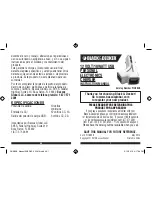
ity of the tire is limited to 186 mph
(300 km/h).
R
Any tire with a speed capability above
186 mph (300 km/h) must include a “ZR” in
the size designation AND the service
description must be placed in parenthe-
sis. Example: 275/40 ZR 18 (99Y). The “(Y)”
speed rating in parenthesis designates
the maximum speed capability of the tire
as being above 186 mph (300 km/h). Con-
sult the tire manufacturer for the actual
maximum permissible speed of the tire.
All-season and winter tires
Index
Speed rating
Q M+S
7
up to 100 mph (160 km/h)
T M+S
7
up to 118 mph (190 km/h)
H M+S
7
up to 130 mph (210 km/h)
V M+S
7
up to 149 mph (240 km/h)
i
Not all M+S rated tires provide special
winter performance. Make sure the tires
you use show M+S and the mountain/snow-
flake marking
i
on the tire sidewall.
These tires meet specific snow traction
performance requirements of the Rubber
Manufacturers Association (RMA) and the
Rubber Association of Canada (RAC) and
have been designed specifically for use
in snow conditions.
Load identification
i
For illustration purposes only. Actual
data on tires are specific to each vehicle
and may vary from data shown in above
illustration.
In addition to the tire load rating, special
load identification
:
may be molded into
the tire sidewall following the letter des-
ignating the tire speed rating
B
(
Y
page 141).
No specification given: absence of any text
(like in above example) indicates a stand-
ard load (SL) tire.
XL or Extra Load: designates an extra load
(or reinforced) tire.
Light Load: designates a light load tire.
C, D, E: designates load range associated
with the maximum load a tire can carry at a
specified pressure.
DOT, Tire Identification Number (TIN)
U.S. tire regulations require each new tire
manufacturer or tire retreader to mold a
TIN into or onto a sidewall of each tire
produced.
7
or M+S
i
for winter tires.
142
Tires and wheels
>>
Operation.
















































